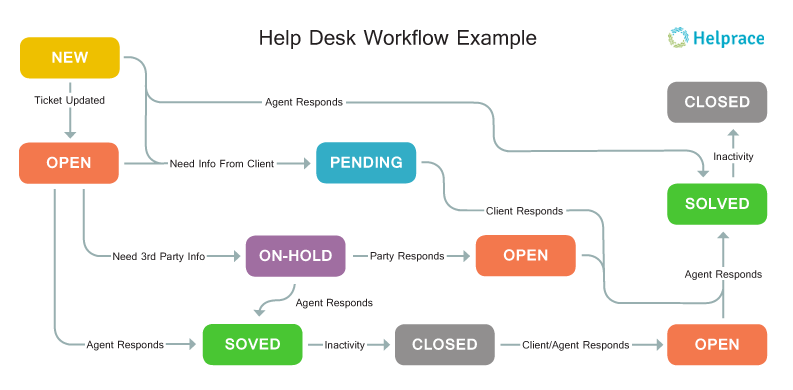-
Picking Help Desk Software: Is It Even Worth Your Time?
Tue, 18 Oct 2016, in Help Desk
Liking this one? You might also enjoy How to Copy the Gmail Experience: Look, Feel & More
 photo credit NEC Corporation of America
photo credit NEC Corporation of AmericaIn life as in business, it pays to be prepared.
Things like server outages, negative press and security breaches can catch you off guard and force your team to scramble mode. This wouldn’t be so bad if it didn’t catch your customers off guard, too.
If you’re running an online business such as SaaS or eCommerce site, the importance of customer service is doubled. Web shoppers simply don’t have the face-to-face interaction to go by. Instead, they use your support channels to stay informed, get support and lodge complaints.
Read More: How to Collaborate Better: The Case for a Team Help Desk
That’s why periodically reviewing your support operations should be a part of your overall company strategy – otherwise customers can get an impression that they’re not high on your agenda.
During this evaluation process, you may come at a roadblock. Can you simply reorganize your workflows in your email software or do you need to switch to a help desk software instead? Sometimes the answer is quite obvious. Sometimes things are not so clear.
Ultimately what it comes down to is how you’d like your support system workflow to look like.

Your workflow is designed to offer the best possible customer experience and a clear pathway at its every step. When a question requires additional information from your client or someone in your company, the ticket doesn’t get lost in the pile. Depending on the way you’re structuring your required workflows, you may decide to narrow down your search on certain support software.
If it ain’t broke, why fix it?
There are two silent business killers. They are organizational debt and technical debt, two terms coined by Steve Blank. When a company is experiencing growth, certain “icebergs” grow with it, hurting anything from sales to operations to customer service. That’s because organizations tend to accumulate habits and data that place a collective burden on the performance of the support team and overall quality of support.
So staying on top of your support means re-examining your system regularly, particularly when:
- New users come along
When new clients point out shortcomings in your help desk system, they’re telling you of a problem that needs fixing. Now you need to find a solution that works for your customers, for your staff and can work within the existing framework of your support. - Staff bring up an issue
Whether management, the dev guy or most importantly, your front line support employee brings up a problem, you should listen. It could be something as minor as a software limitation or something much bigger that goes in the way of doing a crucial support function. - A new product is launched
A new product may require a new way of doing things. Start by reviewing what your current help desk system can offer and what your new product requires. For example, if you need to add a separate category for your new product and your current help desk doesn’t allow it – it may be a sign to think about switching.
Ask yourself: Do you really need to switch?
Some help desks are more polished versions of an email inbox while others give you the ability to customize various elements of the support system. So when and if you outgrow your email client, you’ll need to know beforehand so you can shortlist the right support software for selection.
Everyone on your team from the support reps to management need to be aware of friction points that make the support experience cumbersome to the end-user. It’s never a good idea to wait until clients start pointing out your shortcomings as customer churn could be wreaking havoc on your business by then.
Think about what you’re doing in support right now – your new system must do it better. Otherwise, what’s the point of switching?As a business owner, you might know a lot about running your day-to-day operations. Yet support is a team effort that depends on every single person in your team. By talking to everyone – from your IT, dev and product teams – you’ll have a better idea about what fixes need to be implemented. Talk to your support reps manning the help desk software. Make a checklist of what they are doing, what is bothering them and standing in the way of their productivity.
- Email management
A help desk system takes an ordinary email and deconstructs it so that it’s easy for you to either solve it, file it away or have ticket automation take care of it. Whether customers send an email, fill out a form on your portal or contact you through a feedback tab on your site, the process should be seamless and convenient. - Customer development
Companies need to understand that Joe who left a positive review last month is the same Joe who’s having problems logging in right now. You need to keep track of users who submit tickets as well as participate in your self-service portal. - Support productivity
If you have more than one person doing any support in your organization, tickets will need to be delegated between you at some point. Every needless click or action performed by employees can pose a problem. Identifying such stumbling blocks is crucial. - Workflows and organizations
Different businesses have different support needs. For example, you may want to change the status or priority of a ticket without completely closing them. You may want to divide tickets comping in from regular and VIP customers before working on them.
Taking the first step
Many startups and small businesses begin by managing their support requests using an email account. Since they get only a few emails a day, they don’t necessarily need a help desk tool with all the bells and whistles. They can just use a company support address routed to a Gmail account which adequately does the job.
This is dangerous because small businesses usually don’t have a process set up to optimize, adjust and reflect on their results. They also don’t have a pressing need to examine customer’s communication channels or team performance levels.
A painful consequence of this could be the slow breakdown of the support process before you get a chance to select a cost-effective and scalable support solution that’s right for you. The more prepared you are, the more likely you’ll end up keeping customers happy throughout the growth of your organization.
Read More: How to Choose the Best Help Desk Software in 15 Easy Steps
Tags: help desk
- New users come along

